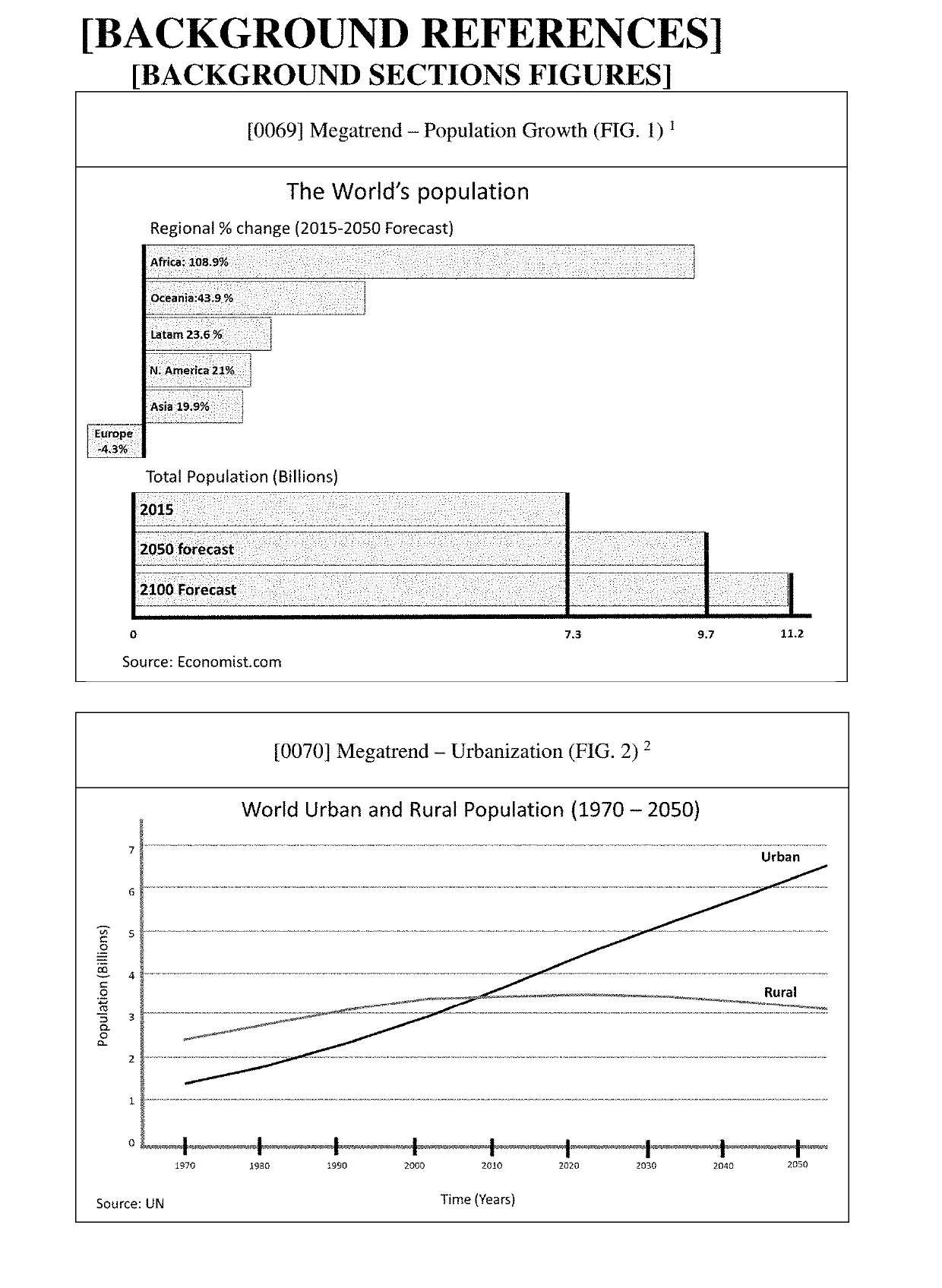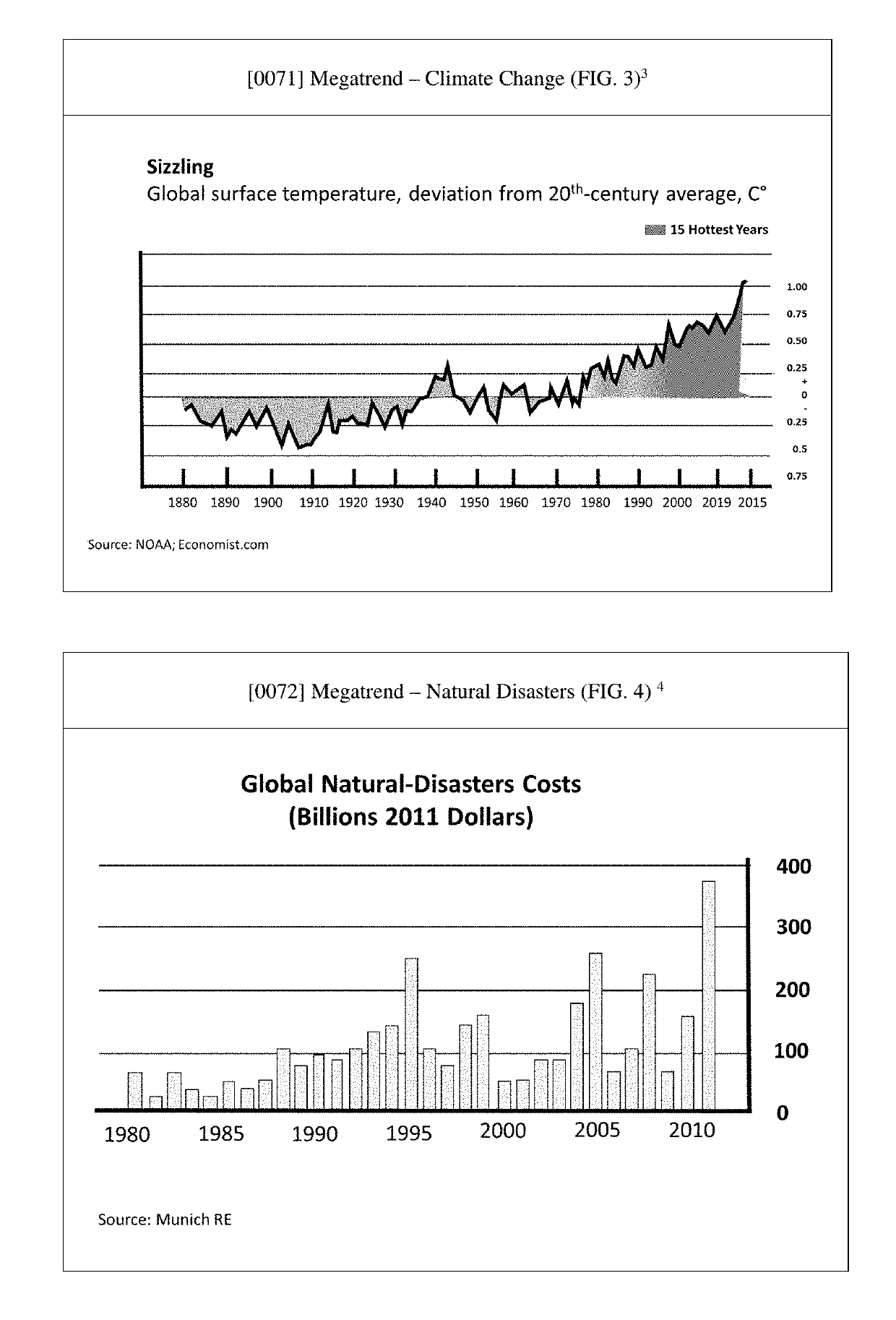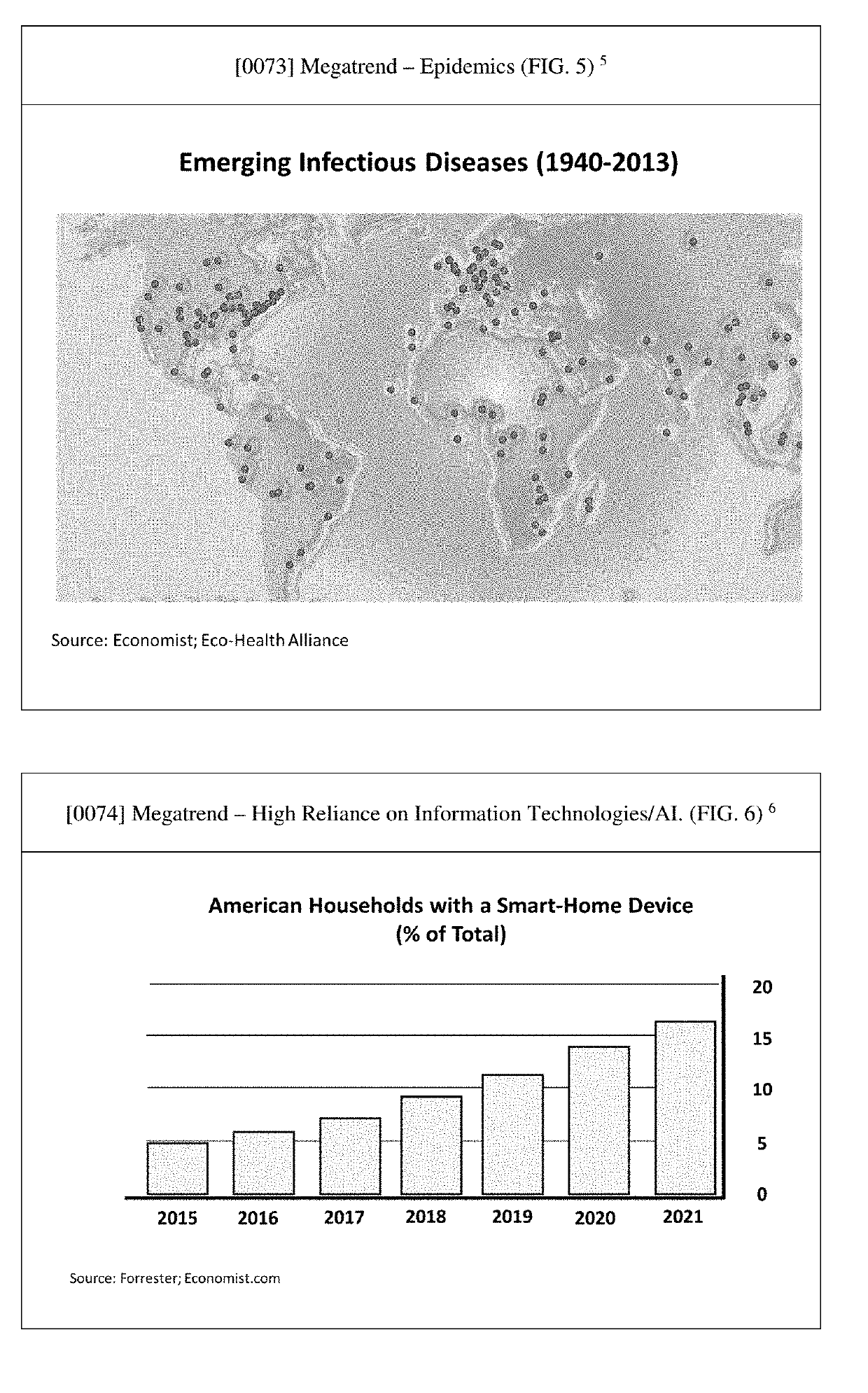Albert Einstein mentioned that “we can't solve problems by using the same kind of thinking we used when we created them” (Harris, K, 2015)1, and perhaps this is the
biggest problem that the world is facing nowadays.
These trends are creating more stress in municipal systems, complexity in cities,
vulnerability in global supply chains, economic uncertainty, systemic risks, global economic volatility, and new challenges in the area of municipal investments and decision-making processes in government.
Therefore, it is highly likely that municipalities will be impacted drastically in the areas of economic development, food / energy /
water supply chains, immigration patterns, culture, regional security, and in the performance of elected politicians by these potential trends.
Democracies may not always select the best leaders since democratic societies sometimes select the best speakers.
Municipalities and local governments will face important challenges during the following decades.
These megatrends may have important impacts on municipalities and cities such as the creation of government deficits, inefficient democratic systems, poverty, refugee crisis, national security, regional chaos, and political unrest.
These megatrends may also
impact regional economies creating conditions for regional conflicts and higher competition for regional resources, and consequently, exacerbating nationalistic sentiments among nations.
This could mean higher densities in cities, more demographic changes, and more consumption creating more difficult conditions for municipalities to provide basic services such as water, health, energy, transportation,
waste management, education, and security.
Therefore, it is highly likely that more people in municipal systems will create more complexity for government leaders and investors.
According to the UN, by 2050 it is predicted that 64.1% of the developing countries and 85.9% of the developed world will be urbanized.6 This accelerated and unplanned
urbanization, particularly in the developing world, could create problems related to floods,
land use, migration,
climate change issues, poverty,
sanitation problems, higher unemployment, terrorism, and more crime.
For instance, forced or unplanned migration often results in rapid slums growth.
Finally, higher
population densities may create more complexity at the time of modifying existing transportation systems,
land use, security systems, border control, energy, water, and health systems.
Floods, heat
waves, droughts, hurricanes, and
snow torments; combined with new real estate developments, new
land use, and less
physical space; could create disruptions and extreme economic losses when disasters related to
climate change occur.
Likewise, these disasters may create unexpected deficits in the budgets of municipalities (see also FIG. 4).
Due to higher
population densities and to the potential effects of
climate change, cities and municipalities may become more vulnerable to natural disasters such as floods, cyclones, and droughts creating more stress in social systems, higher economic volatility in regional systems, and more government deficits.
Other natural disasters non-related to climate change such as earthquakes, tsunamis, meteorites, changes in the earth's
magnetic field, and solar explosions might be more difficult to predict in order to be prepared for their
impact.
Although some of these events are more likely to happen only in specific places (because of geography or local circumstances), the challenge is that some municipalities in the world have been developed without taking into consideration the risks of these events or infrastructure has been developed without applying the best international standards to face such events.
Another example is the Fukushima disaster in Japan (2011), which had important short-term effects in the regional economies and had devastating effects in the local industry stopping the supply chains of auto-parts needed to manufacture cars in other parts of the world.
For instance, Ebola, SARS, and N1H1 had considerable negative
social effects in the economy and created an unexpected economic crisis in some of the municipalities impacted by the epidemics.
Among the most important trends related to this issue are: A higher reliance of information systems, that without proper
information security standards and good governance frameworks, can create important challenges for the resilience of municipalities; a higher reliance of information technologies could increase cyber-threats in municipalities, businesses, and communities; and finally, an
attack to information technologies infrastructure could disrupt most of the energy / water /
food supply systems creating challenging circumstances for municipalities.
(2015) Retrieved from: http: / / economist.com / news / business / 21700380-connected-homes-will-take-longer-materialise-expected-where-smart IT (especially in infrastructure) may put municipalities at risky situations if the IT systems fail.
Also, it is important to mention that IT systems may entirely collapse due to wars or natural disasters affecting infrastructure in areas such as energy, water, health systems, food, transportation systems creating long-term and devastating effects for municipalities.
Globalization,
population growth, and a higher
urbanization rate have created riskier circumstances for municipal governments.
For instance, an
attack on local infrastructure may disrupt most of the important activities of the municipality.
Decentralized terrorism, in-house terrorism, radicalism, and globalized terrorism could represent important challenges impacting the security
planning process of cities and municipalities.
Resources such as water, energy, forests, and materials can be abundant in some regions but very scarce in some other regions.
For instance, some municipalities may be vulnerable because of
water scarcity, poor soil conditions, and scarce food, however, these regions may have abundant energy sources.
Also, if there were not trade agreements, then resources would not reach markets that do not have such resources.
Consequently, some resources could be overexploited in places with
limited resources.
Or it could be the case that the production processes do not follow the best standards, creating scenarios of
environmental degradation.
Finally,
high availability of credit, used only for consumption and not for investment, could create long-term and unsustainable consumption habits.
However, technologies making more efficient the production processes, higher
urbanization rates, and
smart city systems could decrease the correlation between
resource use and economic development.
The more societies use information technologies, the more cybersecurity issues will occur.
Therefore, cybersecurity risks in municipalities are an extremely important issue to consider when protecting the information and
critical infrastructure that governments, organizations, and citizens use to carry out their daily activities.
The chaos effect, systemic risks, and the lack of effective global frameworks governing the world economy could have enormous implications to small and medium-size municipalities impacting their economies, creating a migration, and affecting their municipal infrastructure.
But on the other side, this connection has also increased the likelihood of systemic risks where the
chaos theory (or butterfly effect) could be a more common phenomenon.
On the other hand, technologies such as engineered pandemics or a high reliance in automated /
artificial intelligence systems, can also represent important risks to be aware of and leaders should understand potential scenarios if technologies are not used properly.
The combination of the megatrends explained above together with short-term political thinking, inefficient / ineffective municipal strategies, and the inefficient coordination between some NGOs; may force city mayors, CEOs, and citizens to implement technology solutions, innovations, and strategies related to security, resilience,
collaboration,
sustainability, and economic competitiveness.
Consequently, they don't invest in long-term strategies because these investments would not support them to win the next election.
Other governments may follow short-term thinking because they do not have the resources to apply long-term strategies.
Likewise, there are governments that make short-term investments in technologies that may work for a brief period of time, but that may not work after the government term ends, and the situation may create unsustainable future operational expenses, lack of accountability, and technology guarantee problems.
Other governments may not have the vision or may not be even aware of how these megatrends might
impact them, or decision-makers may not have the necessary knowledge
or education to develop competitive, long-term, resilient, and sustainable municipal plans.
Therefore, short-term thinking can create serious risks in some municipalities and the lack of proper information in the area of city planning and technologies could create scenarios where resources are not invested properly creating deficits or an inadequate use of resources.
Finally, it is important to mention that the knowledge required for decision-making in municipalities in some cases may lack the necessary quality or may not be properly distributed well among all decision-makers.
But most of the municipalities in the world have less than 100,000 thousand inhabitants, and some of these municipalities might not have the budget to educate government staff as bigger municipalities can do.
Currently, the world faces challenging megatrends where an efficient, agile, and effective global framework is necessary to face such complex global challenges.
Also, most of the current alternatives that provide information and solutions to municipalities are not holistic and are just focused on a couple of sectors leaving away other sectors that might be highly critical for the implementation of specific solutions.
Most of the existing alternatives lack of a global approach, are just based on Internet databases, and do not follow a systemic and interdisciplinary approach (holistic approach) highly needed for municipal systems and for projects in the area of sustainable municipalities, economic competitiveness,
community collaboration, resilient municipalities, and regional security.
Finally, the
information quality available on
the Internet is not always segmented or organized properly, and videos describing certain strategies are not always found in a video
database organized by sectors, municipal strategy, and systems size.
Additionally, some of the global municipal leaders in the world (especially in remote areas) may lack good
Internet access and it is difficult to receive updated information in the area of municipal development.
Reducing high volumes of disinformation: One of the main problems in regards the information utilized to develop municipal plans and projects, is the high volume of low-
quality information (or misleading information) that can be found on
the Internet.
For instance, there are high volumes of videos in current search engines that do not have the necessary quality to be used in investment decision-making processes.
For instance, nowadays some search engines may show companies in a map as if these companies were still active, but in fact, some of these companies might not be active or in service anymore and this situation generates “junk” information in the
system.
Finally, even though the information is openly available on
the Internet, sometimes this information is not always organized properly following a systemic approach to solve specific problems.
Or might be the case that the existing Internet algorithms (of the popular search engines) do not always provide the best technology suppliers in the local area, once the search performed by the users do not use a framework to define a specific objective or need.
Also, some of the information provided by some companies providing solutions to municipalities may not always be updated because there is not a fee to force them to keep the information updated.
Additionally, there might be the case that search engines don't apply the correct
algorithm, or apply a generic
algorithm to the user, or that such algorithms are limited to a country level search which would limit users to the possibility of finding better solutions offered in other parts of the world.
These megatrends are creating higher stress in municipal systems, are creating high volumes of information, high volatility, more uncertainty, complex systemic risks, and new challenges in the area of decision-making processes used by government leaders and investors.
In addition, inadequate decision-making, disinformation, inadequate city planning, and unexpected budget deficits due to natural disasters or economic volatility may create more economic crisis that could trigger regional conflicts, decrease global
collaboration, create uncontrolled events (e.g. pandemics), decrease the rule of law, reduce good governance, and generate conditions for apocalyptic wars.
The problem is the lack of a global framework to improve decision-making; it is the lack of scientific thinking in governmental decisions; and in some cases, is the kind of thinking of some elected leaders.
Perhaps, the most difficult challenge is how to deal with
human behavior or the kind of thinking.
People from the bottom would not improve their thinking processes if they see that their leaders are being successful by following inadequate practices.
However, these entities normally don't share all the strategic information, may provide just theoretical support, and may be linked to a specific technology company or country with a potential existence of a conflict of interest.
Although some search engines platforms connect users with technology companies through databases, it is not done by following a well-defined framework including current megatrends, segmenting solutions according to complexity, and identifying key sectors affected by megatrends.
The existing search engines normally provide information in high volumes and are not always organized by following a framework to connect users efficiently with adequate technologies and solutions to develop secure, resilient, sustainable, collaborative, and economically competitive cities / municipalities.
Finally, it is important to mention that the high volumes of information coming from unpaid sources could make information less reliable and valid.
Furthermore, information can be difficult to identify because high-quality knowledge could be unidentified in the vastness of information generated by the
search engine algorithms which may not always prioritize information related to government suppliers (the search results bring mixed information from different sources).
 Login to View More
Login to View More  Login to View More
Login to View More 


